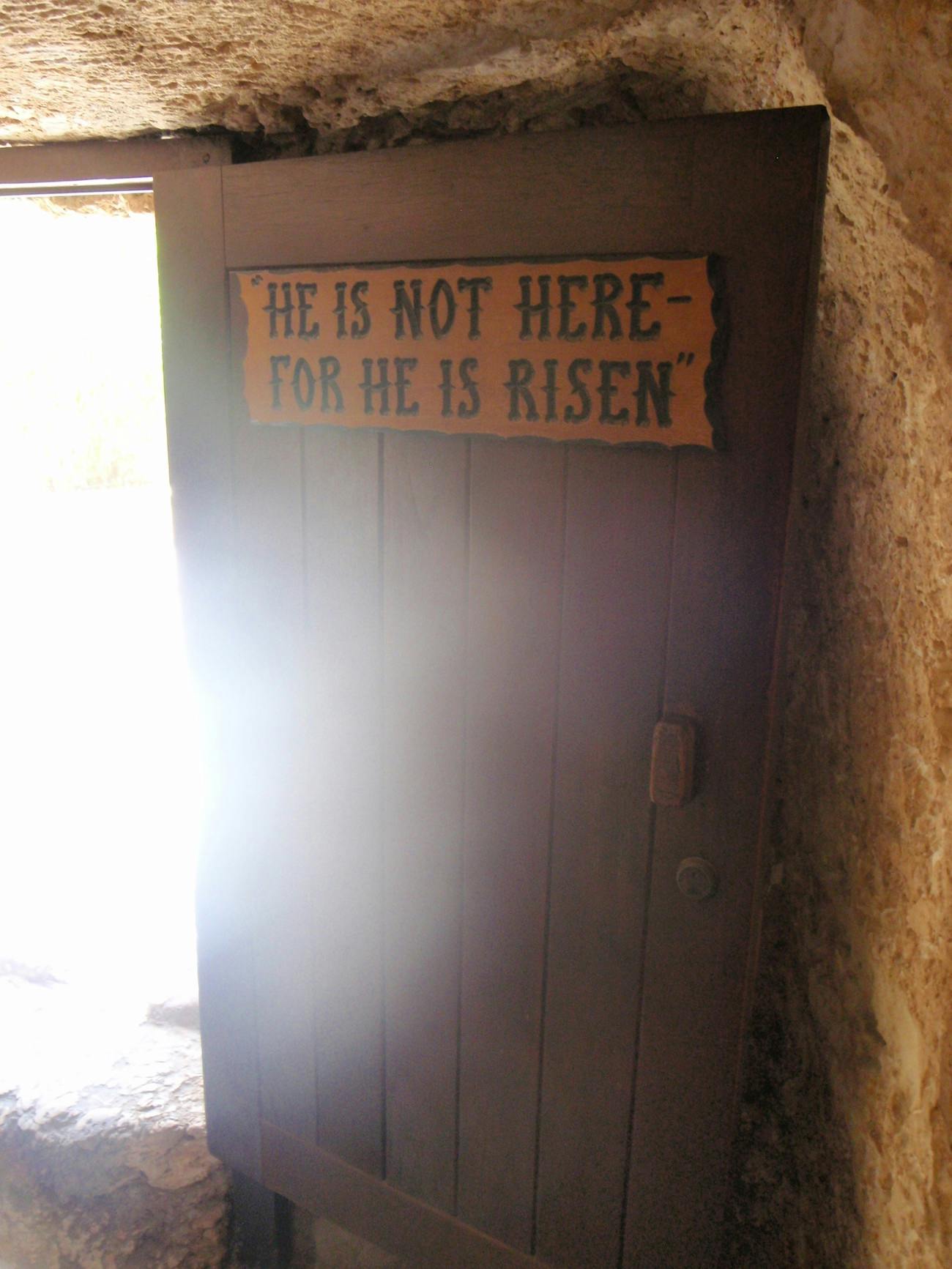Featured blog
He did come on that first Easter morning—and He still does
David Butler | Mar 23, 2018

Egg hunts, Easter baskets, the oh-so-heavenly Cadbury Mini Eggs—there is just so much to celebrate about Easter. But sometimes, we overlook the point of this sacred holiday that reminds us of Christ's Atonement and Resurrection. We asked TOFW Centered in Christ presenter David Butler to share with us beautiful insights to help everyone celebrate a Christ-Center Easter.
Our tour guide in Jerusalem was kind and spunky. I liked him within minutes of meeting him. He was Muslim by faith, but bore a testimony to me about the resurrection of Jesus that I will never forget.
We were outside the walls of the Garden Tomb. He was going to stay there and let me go in on my own, but wanted to give just a few more words of explanation before I did. Minutes earlier, we had been in the Church of the Holy Sepulchre with hundreds of other faithful Christian pilgrims. In Jerusalem, there are two traditional sites that are considered to be the crucifixion and burial spots of the Savior. The Church of the Holy Sepulchre is the more popular of the two. The other, which Latter-day Saints consider to be the spot, is the Garden Tomb. Our tour guide was going through the history, the legends, the archaeological, and practical points of reason and research that each of the two sites had in favor over the other as being the actual spot. One seemed to match scriptures more. The other had sediments and rock formations that seemed to be more convincing. After going through each of the differing arguments, my new friend paused, put his hand on my shoulder, and said with a thick Palestinian accent, “But, David, the important thing is this: in both places, the tomb is empty.”
Those words rang in my heart as I walked in through the gates of the flower filled garden. The sun beamed extra bright that morning. At least, that is my memory. Perhaps it was just a feeling. I walked down the worn stone steps and across the manicured courtyard to see for myself. There on the door were those familiar angelic words, “He is not here, but is risen.” Those are the most hopeful words in all of history. And then, just as Mary, Peter, John, and my Muslim tour guide had promised, the tomb was empty.
Mary was there with the first rays of dawn. In my minds eye, I imagined her sitting by the doorway in that very spot. To her surprise, shock, worry, and sorrow, the stone had been rolled back and the body of the Lord was missing. Inside, there were angels at the head and foot of where he had once laid. That is a visual that any first-century Jew would have recognized immediately. The Ark of the Covenant, which rested in the Holiest Place in the temple, was flanked with angels—a symbol of the presence of God. She ran back to the city and brought Peter and John running back to the tomb with her. They didn’t stay long, and then she was alone yet again. This time, weeping. It has always been touching to me that Mary was crying that first Easter morning. There she was, a sorrow-filled woman sitting in a garden. This whole mortal experience started the same way—with a woman in a garden. And ever since those days that Eve and Adam left Eden, there has been sorrow, thorns, death, pain, and tears. But on this day, and in this garden, nothing would ever be the same. The man whom she thought was the gardener brought healing, happiness, and hope when he rose from the grave that first Easter morning. He had come, as promised, to “wipe away all tears from off all faces” (Isaiah 25:8).
The Master of the Vineyard was there—ready, willing, and able to take the weeping Mary back into the presence of God. The veil had been rent on the temple and now everyone could enter the Holiest Place. A Blessed Eden of no thorns, no death, and no sorrow.
It was fitting that I stood in Mary’s spot because she seems to represent all of us—helpless and hopeless until Jesus came forth from the grave. An empty tomb. Each story of Easter is a story of hope. A story of second chances. A story of nights turned to morning, the impossible becoming reality, and tears wiped from faces. A story about us and Jesus.
Each year, my favorite thing about Easter is to read the stories again and try and remember that even though “weeping may endure for a night, but joy cometh in the morning.” (Psalm 30:5). He did come on that first Easter morning—and He still does.
Remember to watch for David Butler as he presents at our Time Out for Girls events at the 2018 Centered in Christ tour! Click here to find an event near you.
For more beautiful traditions that can help guide your Easter celebrations closer to the Savior, visit Christcenteredcelebrations.com or find Celebrating a Christ-Centered Easter at deseretbook.com.







Comments